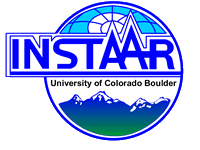University of Colorado at Boulder

USEFUL LINKS
dbSEABED
- Home
- Bibliography
- Methods
- FAQ
- CoreNavigator
usSEABED
- Home
- Atlantic Margin
- Gulf of Mexico
- Pacific Margin
Partners
- GSMFC
- INSTAAR
- PIES
- USGS CMG
- IOW
- USIMS
- NOAA NGDC
- UT Austin
- LDEO, Columbia U
- JOI
|
|
 University of Colorado at Boulder |
A. Introduction
The output parameters of dbSEABED have been defined in a number of reports including the standard document, and in the usSEABED pages (e.g., in the metadata of "http://pubs.usgs.gov/ds/2006/182/data_cata.html"). However those resources are not given in the modern syntaxes of the Semantic Web, which hinders the discovery of the data. Here we provide an RDF/SKOS (Resource Description Framework; Simple Knowledge Organization System) encoding of the parameters of the outputs and inputs for dbSEABED.
Many RDF/SKOS encoded parameter definitions have been released, including the large SeaDataNet collection via BODC ("https://www.bodc.ac.uk/data/codes_and_formats/parameter_codes/"; British Oceanographic Data Centre). There is no best-practice standard for the layout or content of these vocabularies.
The approach adopted here is: (i) to abide by usual practices in RDF/SKOS external definitions; (ii) to follow the BODC style of term definitions for a controlled vocabulary (e.g., "http://www.bodc.ac.uk/about/presentations_and_papers/documents/rkl_imdis08.pdf", p.8) which uses "altLabel", "broaderConcept" and "narrowerConcept" type relationships; (iii) include other information which may allow other types of links to be formed computationally.
B. Output Parameter Definitions
As has been described elsewhere, dbSEABED puts out a number of output data types depending on the stage of processing and user requirements. Over 900 input parameters are associated with the database at data entry (currently over 2 million described sites worldwide), but the primary EXT/PRS/CLC/ONE/WWD outputs consist of 20 primary parameters with their associated 'catalogue'/'location'/'database' information. (The various forms are: EXT - extracted from input data, PRS - results from parsing/analysing word-based input data, CLC - outputs extended with further calculations, ONE - these telescoped into one GIS format, WWD - that with water depths added where absent, from global bathymetric grids.) These outputs are formed from the selection, integration within the vastly bigger set of input parameters. This process is done in software. Many inputs are rejected during the process, with only 60-70% of data passing through QA/QC to final output.
More specialized outputs are also formed, put out in the CMP, FAC and XTA file formats. The CMP format lists the (defuzzified; see "http://www.mathworks.com/help/toolbox/fuzzy/defuzz.html") memberships per sample of components and features in the seafloor geo- and biomaterials. The FAC files put out memberships of a set of predefined sediment/rock types such as those employed within the IODP (Mazzullo et al., 1988).
| Definition of terms used
in encoding: |
all_ParamProperties.n3 |
| Definitions of
EXT/PRS/CLC/ONE/WWD Output Parameters: |
dbSBD_ParamDefinitions.n3 |
Because this page is an informational site, the encodings are given in the more readable N3 notation.
The concepts "IntendedParameter" etc. are included for research on how concepts may be related semantically in a non-controlled vocabulary framework. Seabed materials databases including JANUS, PANGAEA, dbSEABED, JCORES have over 100,000 different parameters and the possibility of specifying narrow and broader concepts is unrealistic. Therefore, automated computatonal methods of semantic 'cross-walking' and assigning meanings, is being devised. This is being done within the SEDIS project.
Mazzullo, J.M., Meyer, A., and Kidd, R.B., 1988. New sediment classification scheme for the Ocean Drilling Program. In Mazzullo, J., and Graham, A.G. (Eds.), Handbook for Shipboard Sedimentologists. ODP Tech. Note, 8:45-67.